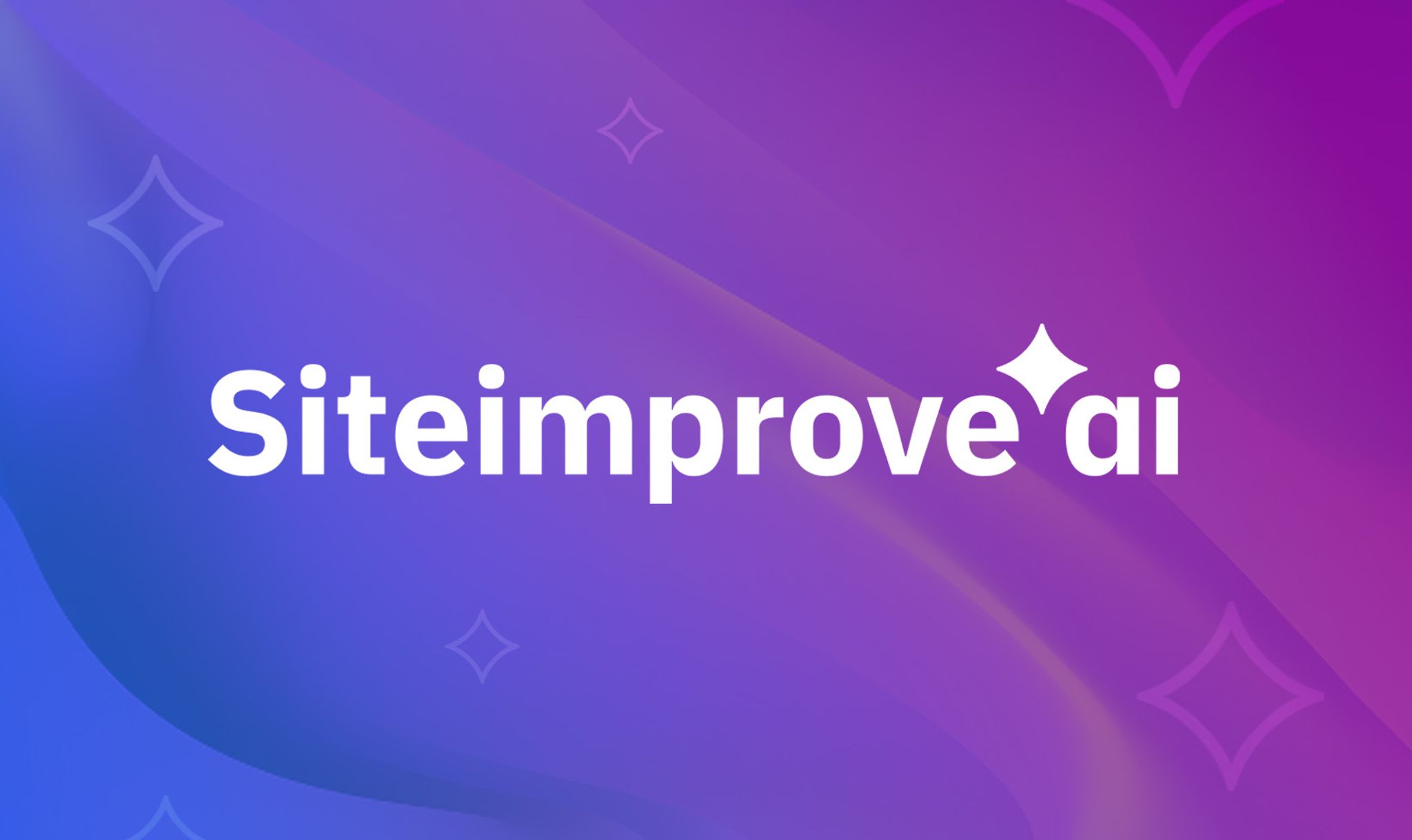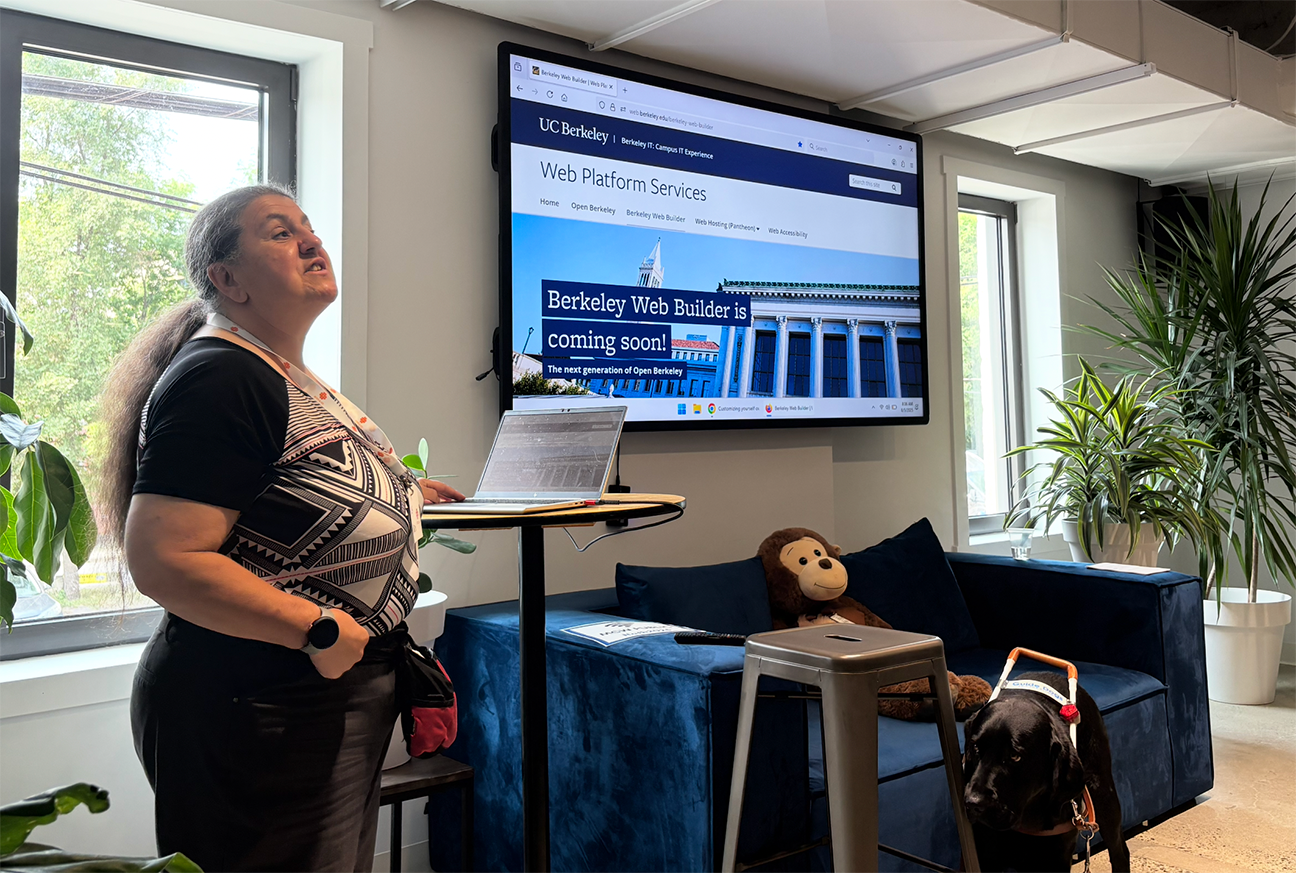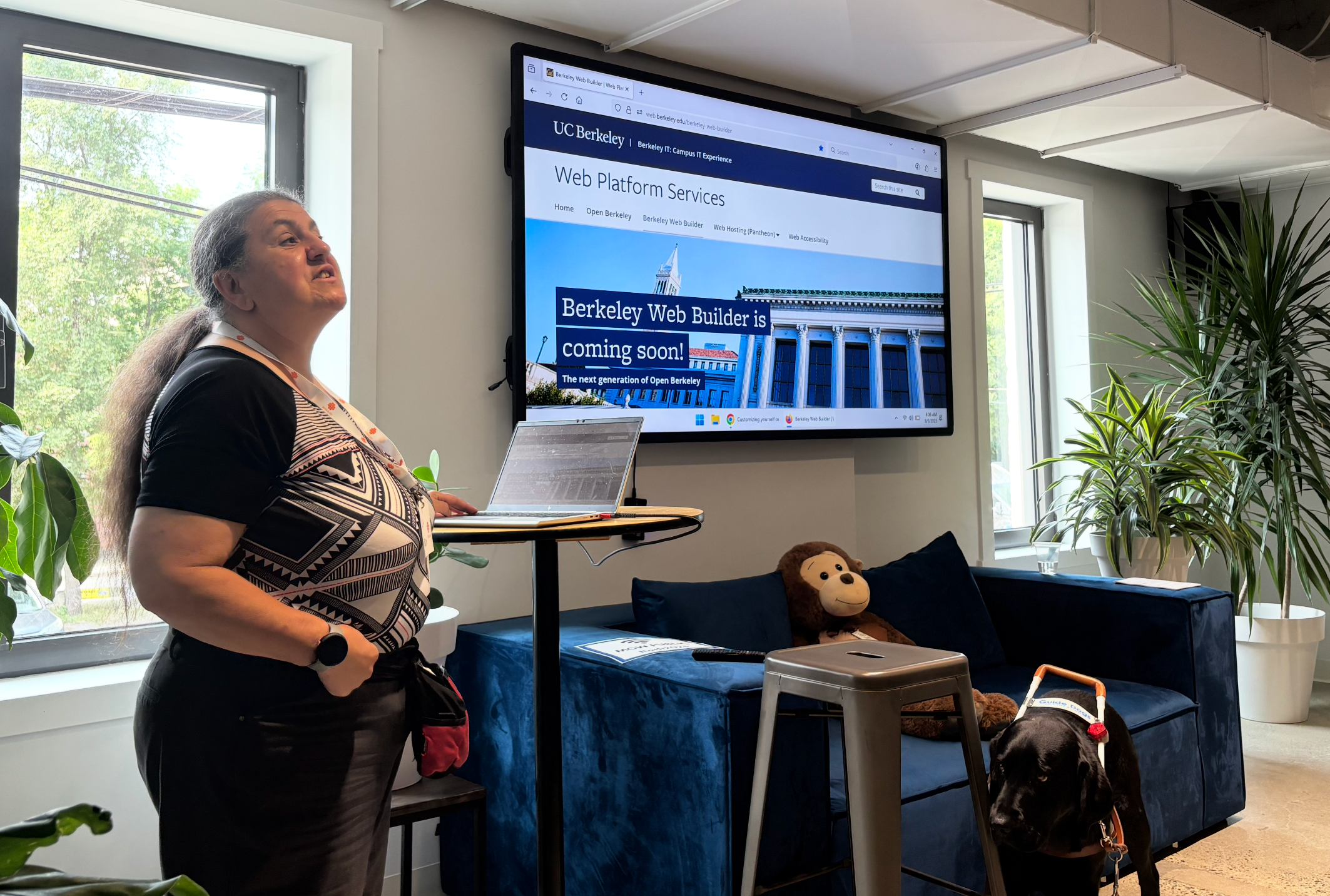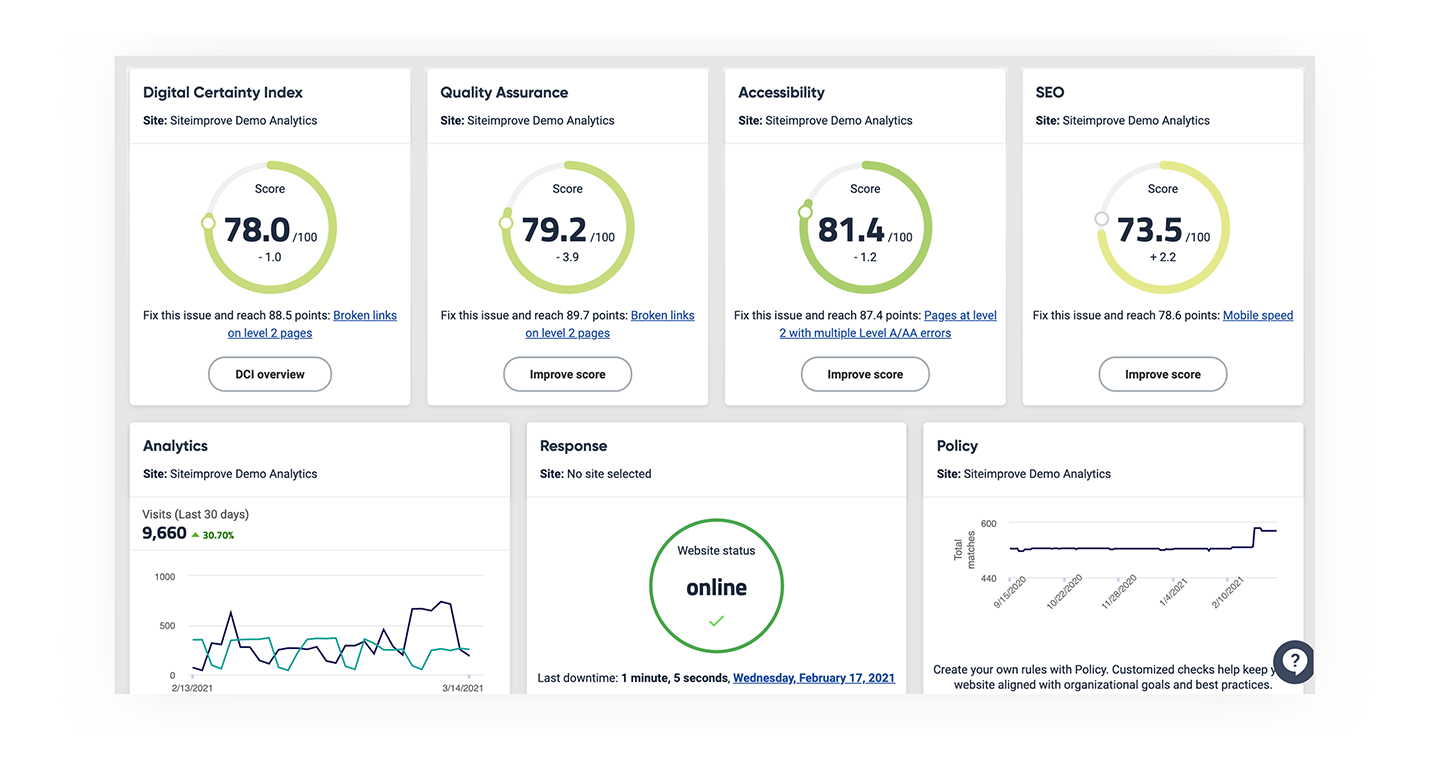Siteimprove.ai Redefines Accessibility and Performance with Unified Agentic Content Intelligence Platform

The established market leader in digital governance continues to drive AI innovation, unveiling a comprehensive platform to help enterprises drive compliance and AI search visibility by enhancing accessibility, SEO/AIO, analytics, and content.
During last week’s Boye & Company CMS Connect 25 Conference in Montreal, one of the most enlightening presentations was on the topic of accessibility, given by Lucy Greco of Access Aces.
As speakers go, Lucy is a firebrand. A no-holds-barred evangelist who works tirelessly to illuminate the benefits of accessible digital experiences. She has deep experience with a myriad of assistive tools, and continues to support people and organizations with the acquisition of new accessibility technologies.
During her talk, Lucy demonstrated the challenges of using screen readers to expand and collapse menus. Many of us take this simple action for granted, but when it doesn’t work for someone who is blind or vision-impaired, it can bring their browsing to an abrupt halt.

Lucy Greco speaking at the Boye & Company CMS Connect 25 Conference.
 Every time I see an inspiring speaker like Lucy championing accessibility, I’m reminded of how much progress we’ve made – and how much further we have to go. On the upside, we’ve seen the evolution of the WCAG and the rise of the EU’s Web Accessibility Directive as positive policy signals.
Every time I see an inspiring speaker like Lucy championing accessibility, I’m reminded of how much progress we’ve made – and how much further we have to go. On the upside, we’ve seen the evolution of the WCAG and the rise of the EU’s Web Accessibility Directive as positive policy signals.
But the downside is dire.
According to a 2024 research report, 88% of websites still aren’t fully compliant with the latest web accessibility standards. While this is detrimental to users with disabilities, data codifies that websites with lower accessibility scores are also missing the mark in the revenue department. Big time.
As someone who has worked on numerous website accessibility remediation projects – particularly in the U.S. public sector, where regulatory benchmarks like Section 508 have real teeth – I’ve long relied on best-of-breed scanning tools as a central instrument. While I’ve used several, Siteimprove has always been a go-to resource at the enterprise level.
There are good reasons for this. First and foremost, it has one of the most intuitive UIs in the industry, making it incredibly easy to use with large-scale web properties. The analytics visualization is stellar, so tracking progress on your accessibility efforts is concise. From an evidentiary perspective, everything is tracked with its Digital Certainty features.
There’s also an abundance of knowledge resources available to accessibility leaders within organizations. While this covers the fundamentals for content creators and web developers, it also offers hybrid education courses in its Learning Hub, which is designed to help organizations adopt digital accessibility competencies at scale.

Source: Siteimprove website
Siteimprove’s extensibility across broader website health is also unparalleled, enabling users to optimize and enhance their SEO and content strategy with meaningful and relevant tools in a single, unified platform. This is becoming a key factor in the age of AI answer engines, where the nature of search has evolved and enterprises are struggling to build experiences that are discoverable by both humans and AI.
From a core functionality perspective, Siteimprove has earned its place in the hearts and minds of its users, becoming a dependable part of many stacks. It's trusted by leading global brands like AT&T, Akamai, Costco, and L'Oreal, giving it a credible foundation from an enterprise perspective.
Siteimprove has also been on a tear with its AI innovation and product vision, and that’s led to some compelling new features in its freshly unveiled Siteimprove.ai – which the company is billing as a “unified agentic content intelligence platform.”
The word “agent” is certainly buzzworthy right now. But with Siteimprove.ai, the hype-to-value ratio is solid, leveraging agentic strategies to deliver high-performing, accessible content in a single platform and making it discoverable by both humans and AI.

Siteimprove CEO Nayaki Nayyar. Source: LinkedIn
"In the AI era, enterprises are under tremendous pressure to meet rising compliance standards while ensuring their content performs – not just for people, but for AI," said Nayaki Nayyar, CEO of Siteimprove.
As Nayyar stated in yesterday's announcement, Siteimprove.ai is the only enterprise platform capable of delivering both content compliance and performance in a truly unified manner. Armed with these capabilities, organizations can now auto-remediate accessibility issues, improve AI search visibility, and scale content outcomes using its agentic content intelligence platform.
Let's dig into more of the details.
Enhancing content compliance and performance in the AI era
I recently wrote about the challenges of adapting to a post-Google world of search, where acronyms like GEO and AEO are taking center stage for marketers. CMS platforms like Optimizely are offering some relief with integrated, on-board “GEO-Ready” capabilities that address some of these concerns.
Search is just one of the many areas being disrupted in a world where content is exploding exponentially. AI-powered content generation and personalization are driving a higher number of content variants, and AI answer engines like ChatGPT and Perplexity are redefining how humans search for and discover content.
According to IDC Analyst James McCormick, the rise of generative search engines is having a profound impact on the digital landscape. Brands must adapt their strategies and focus on delivering high-quality, authoritative content that can be effectively discovered and engaged by AI-driven search.
As he says, the challenge for digital marketing leaders is coping with the sheer volume of content and compliance pressures that have been exacerbated in the AI era. Traditional SEO and analytics no longer cut it in our hyperbolic, AI-driven world – and organizations are struggling to keep their content compliant and performant as regulations around EAA and ADA continue to expand.
This is where Siteimprove.ai is well-positioned with its focus on content intelligence, giving customers expanded visibility into their content performance with both humans and AI-powered search. It does this through agentic automation, employing AI agents to remediate content compliance issues and optimize content continuously – which, if done right, can deliver measurable ROI.
Powering content intelligence with AI agents
AI agents are being employed as “virtual workers” across a wide range of enterprise applications. They’re providing a whole new wave of automated service, assuming specific roles and functions that enable humans to work smarter and more efficiently. As we've seen in recent banking and fintech examples, some of these agents even have their own email addresses.
One of the central features of the Siteimprove.ai announcement is the availability of modular agents, which function across SEO, content strategy, accessibility, and analytics – the various domains within the Siteimprove platform. Together, they provide automated teams that customers can tap into at any time.
What are these agentic workers capable of?
For starters, Siteimprove’s accessibility agents help reduce compliance risk across web, mobile, social, documents, and apps by proactively identifying and resolving accessibility issues at scale. Additionally, Siteimprove’s analytics agents can predict, optimize, and improve content performance using conversational insights surrounding traffic, engagement, and ROI.
On the search side, Siteimprove's agents are capable of increasing content visibility for both humans and AI by optimizing performance for search engines, LLMs, and emerging AI-powered discovery platforms and answer engines.
One of the more interesting and promising tools is Siteimprove’s content agents, which are designed to enhance content operations via Gen AI. These features can accelerate a user’s content research, planning, and creation by generating data-driven briefs, outlines, and high-quality drafts.
Finally, Siteimprove includes a set of orchestration agents, which are focused on connecting Siteimprove.ai with your existing tech stack – including CMS, DXP, CMP, and other platforms. These workers help seamlessly integrate systems and content workflows, reducing friction and time to value. Siteimprove already has a robust partner ecosystem that further streamlines these connections, including open source platforms like Drupal and WordPress, as well as Adobe, Optimizely, and WordPressVIP (among others).
That orchestration piece is key, and expands across Siteimprove’s foundational accessibility strategy. The company embraces a full agentic content lifecycle approach to address the challenges of fragmented content workflows. It does so by leveraging the Shift Left DevOps methodology – a process that integrates QA, security, and other practices earlier in the development process. This provides a more proactive and holistic view of content using its agents, allowing customers to orchestrate the full content lifecycle end-to-end with accessibility in mind from the beginning.
Leveraging AWS Bedrock
It’s worth noting that Siteimprove.ai is built on Amazon Bedrock, a comprehensive, secure, and highly flexible cloud service for building generative AI applications and agents. It utilizes its native Amazon Nova models to deliver not only frontier intelligence, but industry-leading price performance.
I’ve been working closely with AWS over the last two years, experimenting with Bedrock and its Nova model sets. While Amazon was slow to catch its hyperscaler peers, they’ve made up significant ground, and its foundational models are providing both fantastic performance and competitive efficiency. This should reinforce confidence around Siteimprove’s cloud-powered AI posture.
"Siteimprove's approach showcases how enterprises can successfully implement AI strategies while maintaining compliance standards,” said Carol Potts, GM, US ISV Sales, Amazon Web Services. “Amazon Bedrock provides Siteimprove with a comprehensive and secure foundation for building their generative AI applications that help customers improve content quality, accessibility compliance, and SEO/AIO at scale.Using Bedrock's AgentCore capabilities, Siteimprove can deploy and manage AI agents at scale with built-in security, reliability, and performance features."
Pricing
I have major gripes with enterprise software vendors that lack pricing transparency. Siteimprove telegraphs a good message on its website, “offering flexible pricing to meet your needs.” But unfortunately, it doesn't provide any published guidance.
That said, Siteimprove’s tooling requires a bit more nuanced dependency, so contacting a sales rep to discuss the parameters of your properties – and what kind of crawling requirements you have around site size, page count, etc. – makes a bit more sense. It’s a top-tier enterprise product, and I firmly believe you get what you pay for. Still, I’d love to see some foundational figures to understand where pricing starts.
Once upon a time, I regularly sold Siteimprove into customer stacks in a referral capacity, so I had proximity to the pricing variables (which have undoubtedly changed). That said, it was consistently the most expensive of any vendor being considered.
But Siteimprove consistently justifies the cost, offering a rich bench of products that include Accessibility, Quality Assurance, SEO, Ads, Analytics, and Performance. It’s early days, so we’ll see how the Siteimprove.ai features are juiced across its ecosystem.
If you’re interested in a demo or setting up a pricing discovery call, the best bet is to engage with the chatbot on their pricing page.
Extra credit (and free): Siteimprove does offer a Digital Insights Report, where you can enter your website URL and let their team “play detective.” Within 48 hours, they'll provide you with a custom assessment, complete with revealing scores and metrics about your site's performance.
The verdict
In my opinion, Lucy Greco has achieved hero status in the accessibility space. She’s brilliant, unabashedly blunt, and forthright with her observations.
And she’s usually right.
Like Lucy, there are lots of talented accessibility experts leading the charge for digital equality. We should all take a page from their playbooks because delivering inclusive digital experiences is more important than ever. And yet, despite the visible progress, we’re still struggling to get it right.
Siteimprove has also been a leader in this field, dedicating its innovation to solving the accessibility crisis. To their credit, they’ve done immense work, and they’ve expanded the value quotient by addressing other key components that are vital to site health.
The key to any successful accessibility strategy is part tech, part people. Remediation requires a best-of-breed tool, but it also needs context – specifically, humans who understand how to distinguish false positives within reports and manually run keyboard tests. Having clearly defined governance and policies is essential to managing these facets within an accessibility practice.
What I like about Siteimprove.ai is the novel use of its agent-powered content intelligence to enhance the people part of the quotient. Humans are still essential to the workflow, but the agentic capabilities promise to enhance productivity and allow users to do more with less. As long-time leaders in the space, they’ve thought long and hard about how and where to apply their agents to deliver maximum value.
Siteimprove.ai shows a lot of promise. Armed with this additional AI-powered action and insight, enterprises should have more control than ever over their accessibility and content performance. But it all starts with a cultural commitment within every organization to do better. To address accessibility earlier in the design and development lifecycle.
We only get there if we put people first. And that means everyone.
Looking for guidance on Siteimprove? Talk to an expert.
Upcoming Events

CMS Kickoff 2026
January 13-14, 2026 – St. Petersburg, Florida
Meet industry leaders at our fourth annual CMS Kickoff – the industry's premier global CMS event. Similar to a traditional kickoff, we reflect on recent trends and share stories from the frontlines. Additionally, we will delve into the current happenings and shed light on the future. Prepare for an unparalleled in-person CMS conference experience that will equip you to move things forward. This is an exclusive event – space is limited, so secure your tickets today.
